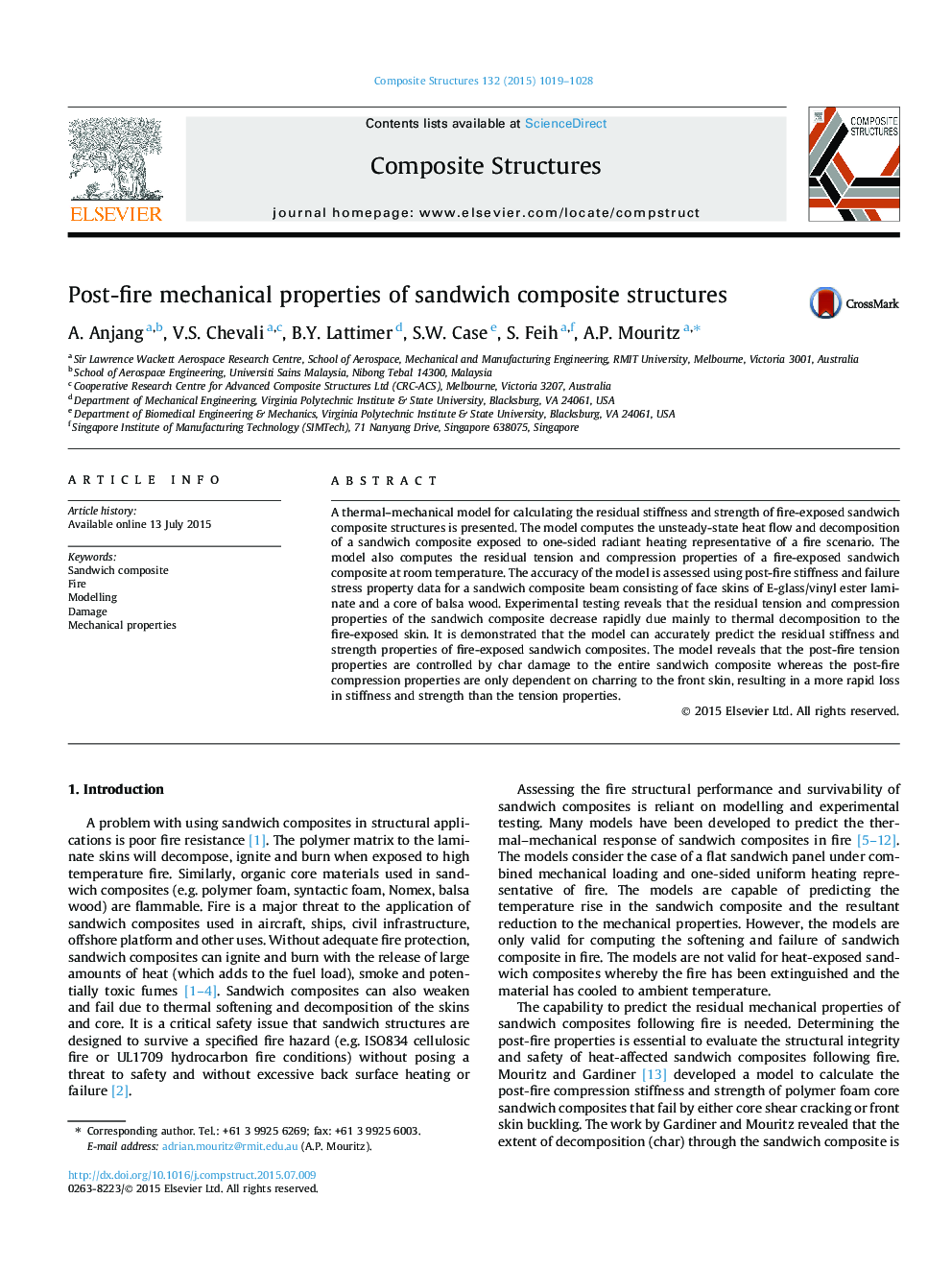| Article ID | Journal | Published Year | Pages | File Type |
|---|---|---|---|---|
| 251148 | Composite Structures | 2015 | 10 Pages |
A thermal–mechanical model for calculating the residual stiffness and strength of fire-exposed sandwich composite structures is presented. The model computes the unsteady-state heat flow and decomposition of a sandwich composite exposed to one-sided radiant heating representative of a fire scenario. The model also computes the residual tension and compression properties of a fire-exposed sandwich composite at room temperature. The accuracy of the model is assessed using post-fire stiffness and failure stress property data for a sandwich composite beam consisting of face skins of E-glass/vinyl ester laminate and a core of balsa wood. Experimental testing reveals that the residual tension and compression properties of the sandwich composite decrease rapidly due mainly to thermal decomposition to the fire-exposed skin. It is demonstrated that the model can accurately predict the residual stiffness and strength properties of fire-exposed sandwich composites. The model reveals that the post-fire tension properties are controlled by char damage to the entire sandwich composite whereas the post-fire compression properties are only dependent on charring to the front skin, resulting in a more rapid loss in stiffness and strength than the tension properties.
